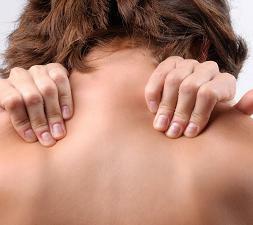 Osteochondrosis of the thoracic spine, in contrast to cervical and lumbar osteochondrosis, is a rarity.
Osteochondrosis of the thoracic spine, in contrast to cervical and lumbar osteochondrosis, is a rarity.
The whole thing in the structure of the thoracic region: it has more discs than in the cervical and lumbar combined, the discs are smaller and thinner. The mobility of this department is generally lower, and part of the load takes on the ribs and sternum.
In osteochondrosis of the thoracic spine, symptoms can be confused, for example, with a heart attack. The reason for this is the specificity of the disease.
Painful pains during movement and load, as in cervical or lumbar osteochondrosis, in this case is not available, and the complications associated with suspected angina or myocardial infarction or with respiratory function disregard come to the fore.
Causes of
To a greater extent, the development of osteochondrosis is promoted by hypodynamia - the deficit of muscular load, forming the detrusiveness of the muscular corset, weakening of its functions and increasing the load on ligaments and intervertebral discs.
To provoke the appearance of osteochondrosis can also the following conditions:
- Wrong posture and lateral curvature of the spine;
- Harmful habits;
- Nervous and physical overstrain, stress;
- Overload of back and spine when wearing high-heeled shoes, with pregnancy and flat feet;
- Back injury;
- Hypodinamy;
- Heredity;
- Physically hard work.
Intervertebral discs of thoracic vertebrae are equally badly affected by a sedentary lifestyle and physical activity, which increases the likelihood of injury.
What is the specificity of the thoracic spine?
Everyone knows that the thoracic region is functionally inactive, in particular, when compared with the neck. Yes, and the load on it is not so great, regarding, for example, the lumbar department. For this reason, the onset of chest disease rarely occurs with any symptoms at an early stage of development.
Low mobility of the thoracic spine is associated with its anatomical features - the connection of the vertebrae with the ribs and the sternum makes it possible to create a sufficiently mobile and, at the same time, sturdy construction that is less prone to injury and external influences.
Relatively small load on this department, contributes to the fact that the occurrence in it of any problems( for example, displacement of vertebrae, intervertebral hernia, protrusion of discs) are rare, this is confirmed by statistics. However, their appearance can not be called something extraordinary, for example, a violation of posture and scoliosis may be some provoking factors that lead to the appearance of diseases of the spine.
Symptoms of such diseases manifest themselves quite late and are quite typical for osteochondrosis - they usually represent a compression of the nerve roots, in rare cases, the spinal cord itself may be squeezed or damaged due to blood flow disorders, possibly narrowing as a result of compression of the veins and arteries.
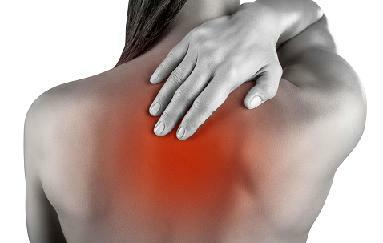
Symptoms of an osteochondrosis of a thoracal department of a backbone
Osteochondrosis of a thoracal department of a backbone signs can have absolutely different, similar to displays of other diseases of internal organs. Often it is the breast osteochondrosis that is taken for ischemic heart disease, cholecystitis, peptic ulcer, and even myocardial infarction and pneumonia. For this, this disease is called a "chameleon".
Symptomatic, Pain-related :
- Pain localized below the scapula, can give into the intercostal nerves. This leads to neuralgia. The pain increases when a person takes a breath, actively moves.
- Chest pain is most often localized to the left, may resemble ischemic heart disease. In this situation, it is important to find out the cause in time, because of what the pain appeared. It is necessary to fully examine the cardiovascular system.
Neurological symptoms:
- Numbness or "crawling" in the legs, upper chest and abdomen( depending on the affected disc);
- Reflexive muscle tension of the chest or upper back;
- In especially neglected cases, there may be a malfunction of the pelvic organs, a decrease in potency in men.
Symptoms of osteochondrosis of the thoracic spine, except for pains in the spine and back area, near the place of localization of osteochondrosis, can also speak in the upper abdomen, heart, liver, gall bladder.
When these pains occur, it is sometimes possible to erroneously diagnose. Pain in the right side of the chest under the ribs can be confused with inflammation of the gallbladder, in the left side of the chest - confused with a heart attack. It is a mistake to take pains in the corresponding areas of the abdominal cavity for manifesting a stomach ulcer or gastritis.
Dorsago
Dorsago is one of the symptoms of the osteochondrosis of the thoracic spine, which is manifested by acute pain. Usually this symptom occurs in people who spend a lot of time in one position or in an uncomfortable position, with monotonous performance of monotonous work.
There may be pain in the spine in the thoracic region, the muscles tense, it is often even difficult to breathe. Intercostal neuralgia may occur.
Dorsalgia
The period of exacerbation will last 2-3 weeks. At the same time, the pain sensations gradually increase. Unclear pain manifests itself in the affected spine. As a rule, the pain manifests itself particularly actively with deep breathing and tilting forward, backward, to the sides.
The nature of pain in dorsalgia can be very different. The pain can be pulling, burning, aching, cutting, can give under a leg, an arm or a hand, a buttock, a scapula. The localization of pain is no less diverse. They can appear below, above, in the middle, right, left, between the shoulder blades.
Treatment of osteochondrosis of the thoracic spine
When preparing the treatment plan that determines how to treat the osteochondrosis of the thoracic part, the diagnostic examination data based on the X-ray examination help. Such a survey gives a clear idea of how to treat chest osteochondrosis, because, X-ray indications, which indicate the sprouting of vertebral bodies and the presence of changes in the intervertebral distance( decrease in height), is a characteristic symptom of this disease.
Treatment of osteochondrosis of the thoracic spine depends on the stage of the disease and basically comes down to conservative therapy. Surgery is extremely rare in the case of spinal hernia.
Medical treatment
Drug therapy is based on the following principles:
- Use of papain , which allows to keep fluid inside the intervertebral disc.
- Vitamins. Most often, complete vitamin complexes or drugs with B-group of elements
- Spasmolytics and muscle relaxants , which reduce spasm of muscles surrounding the spine. Analgesics. NSAIDs and analgesics based on combinations of analgin, paracetamol, ibuprofen and ketorolac.
- Chondroprotectors .It is necessary to catalyze the restoration of damaged cartilage, the most popular are glucosamine and chondroxide.
After the elimination of acute phenomena apply massage of the muscles of the back and lower limbs. Manual therapy is indicated at 1-3 degrees of osteochondrosis in the case of functional blockade. It includes various options for a mild and coarse impact on the muscles of the back.
The duration of treatment of the osteochondrosis of the thoracic spine depends on the severity of the disease and the degree of age-related changes, as well as on the diligence of the patient when performing the prescriptions of the treating doctor.
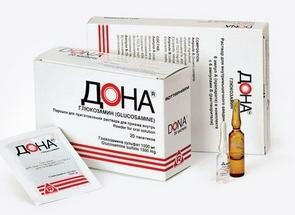
Gymnastics in chest osteochondrosis
In case of osteochondrosis of the thoracic spine, patients are prescribed therapeutic exercises, the main purpose of which is to increase the mobility of the rib-vertebral and intervertebral joints. LFK( provided regular and correct exercise) allows you to eliminate even very strong muscle spasms. Moderate exercise will help relieve stiffness in the spine, which occurs with a weak muscle corset.
Daily classes, conducted under the supervision of an experienced instructor, will have a beneficial effect on the whole organism, and in particular on the bronchopulmonary system. In patients, ventilation of the lungs improves, and they become able to painlessly take deep breaths and exhalations.
Massage
Massage not only weakens the severity of the symptoms of the disease but also helps a person recover, efforts of positive effects from other elements of complex therapy.
It is prescribed, individually based on the clinical picture of the osteochondrosis of the thoracic spine, the presence of chronic diseases and contraindications.
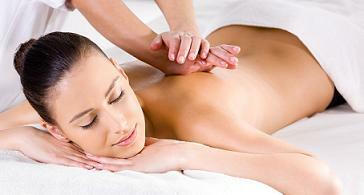
Manual therapy
Manual therapy is used to eliminate hypertonic muscle and spasms, as well as to restore the back mobility. Thanks to manual therapy, it is possible to release blood vessels, improve nutrition and oxygen supply of intervertebral disc tissues.
Correct position on rest and during sleep
For prophylaxis of osteochondrosis and during treatment it is necessary to organize the correct position on rest and in sleep. Best if you sleep on an even and hard bed, but that it is without fanaticism, if the bed does not meet the requirements, sleeping on the floor is not recommended, so you can catch a cold. This measure is very necessary for the spine to recover its normal form more quickly.
However, at first, there may be quite intense pain that persists until the vertebrae take a physiological position. To relieve pain and discomfort, you can put a roller under the affected area.
Exercises
The most effective treatment for muscle spasm is exercise physical therapy. Properly chosen exercises relax, and, at the same time, strengthen, train the muscles of the back. As a result, the thoracic spine is stabilized, the striated spinal nerves are released.
The complex of exercises for chest osteochondrosis is carried out as follows:
- The starting position is on inhalation, stand upright, legs together, hands down. Pull your arms up - exhale, then bend back - a deep breath. Lower your arms, lean forward, round your back and lower your shoulders and head - exhale. Run 8 to 10 repetitions.
- The starting position is sitting on a chair. Slowly start your hands behind your head - inhale, bend back 5 times, leaning on the back of the chair with the spatula - exhale.
- The starting position - to stand on all fours and maximize the back, stay for 3 seconds so, three keep your head straight. Run 5 to 7 repetitions.
- The starting position - it is convenient to lie on your stomach and lean against the floor with your hands. At the same time, forcefully bend back and try to tear the case off the floor. Run 5 to 8 repetitions.
- The starting position is lying on the stomach with arms stretched out along the body. Bend in the thoracic region, trying to raise the head and legs as much as possible. Run 5 to 8 repetitions.
If you fulfill all the doctor's prescriptions, then slowly, but surely you can achieve a significant improvement in the condition. Video exercises for this type of osteochondrosis are presented in this video.
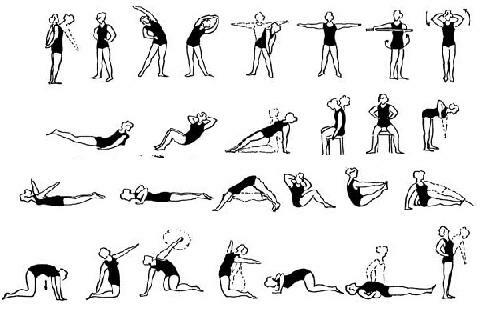
Prevention of
The health of the thoracic and other parts of the spine can damage:
- long static loads( sitting in front of the TV, computer);
- weight lifting;
- the habit of slouching;
- hypothermia and frequent colds.
Office workers, who work long hours in the workplace, often need to change their position, get up, do physical exercises. Benefits even elementary sipping.

How to choose probiotics for the intestines: a list of drugs.

Effective and inexpensive cough syrups for children and adults.

Modern non-steroidal anti-inflammatory drugs.

Review of tablets from the increased pressure of the new generation.
 Antiviral drugs are inexpensive and effective.
Antiviral drugs are inexpensive and effective.


